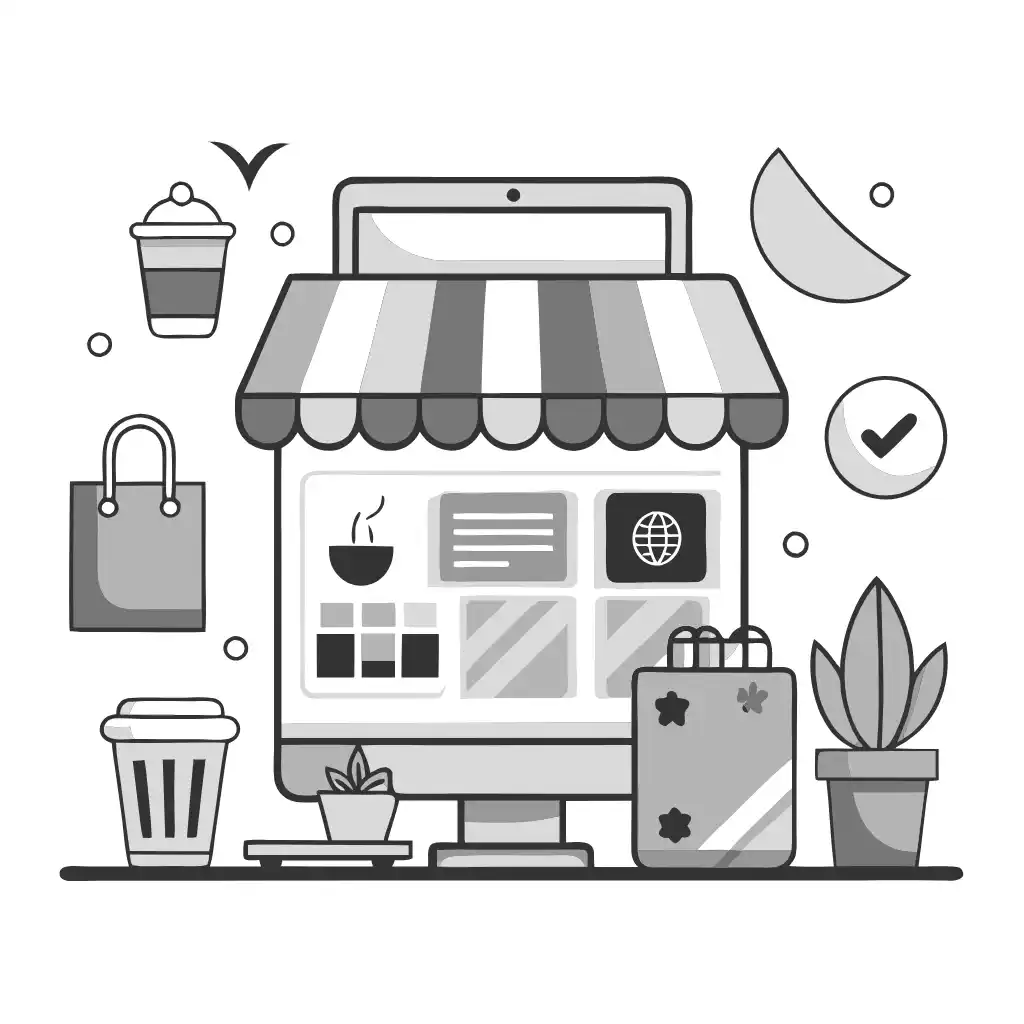국제 전자 상거래 향상: 글로벌 아웃리치를 위한 WooCommerce 활용
WooCommerce는 전자 상거래에서 글로벌 입지를 구축하는 데 주력하는 온라인 판매자에게 큰 도움이 됩니다.
예를 들어 전체 온라인 상점(WooCommerce 상품 페이지 포함)에서 여러 언어를 제공하는 것과 같은 WooCommerce 호환 확장을 배포하여 Amazon과 마찬가지로 전 세계 고객에게 도달 범위를 확장할 수 있습니다.
이 기사는 다음 방법을 포함하여 다양한 WooCommerce 확장, 추가 기능 및 전략을 사용하여 우수한 전환율을 위해 WooCommerce 제품 페이지를 향상시키는 방법을 안내합니다.
템플릿을 사용하여 상품 페이지를 지능적으로 정렬합니다. 제품 템플릿을 사용하여 제품 세부 정보를 전략적으로 구성합니다. 이미지가 타겟 고객과 일치하는지 확인합니다. 클라이언트를 위해 언어 및 통화 전환을 간소화합니다. 제품 레이아웃 내에서 '장바구니에 추가' 버튼에 쉽게 액세스할 수 있도록 합니다.

제품 디스플레이 정제: 우커머스를 활용하여 시장 확장 강화
온라인 소매에 WooCommerce를 활용하고 있다면 상품이 기본적으로 시간순으로 정렬된다는 것을 알고 계실 것입니다. 이는 가장 최근에 포함된 제품이 먼저 표시되고 이전에 추가된 제품이 마지막에 표시됨을 의미합니다.
새로운 시장 영역을 탐색하려는 사람들을 위해 제품의 프런트 엔드 디스플레이를 정교하게 제어해야 합니다.
예를 들어 다음과 같은 측면을 기반으로 WooCommerce 제품을 구성하는 것을 선호할 수 있습니다.
제품 비용(오름차순 또는 내림차순) 수요(베스트셀러 우선) 제품 평가 및 피드백(우수한 등급 또는 리뷰가 있는 제품 우선) 다행히 무료 WooCommerce 추가 제품 정렬 옵션 확장 프로그램을 사용하면 기본 소매 페이지에서 제품 구성을 정의할 수 있습니다. 시작하려면 WordPress 사이트에서 확장 프로그램을 설치하고 활성화하십시오.
활성화 후 모양 > 사용자 지정 > WooCommerce > 제품 카탈로그로 이동합니다.
여기에서 기본 소매 페이지 제품 정렬에 대한 다양한 구성을 찾을 수 있습니다. 기본 제품 정렬 드롭다운을 사용하여 WooCommerce의 기본 조직을 결정합니다.
기본 정렬 수요 평균 평가 최신순 정렬 비용순 정렬(오름차순) 비용순 정렬(내림차순) 게다가, 새로운 기본 정렬에 라벨을 지정할 수 있습니다. 예를 들어 수요를 선택하면 수요순 정렬이라는 라벨을 지정할 수 있습니다. 이는 사이트의 프런트엔드에 표시됩니다. 마지막으로, 매장에 포함할 정렬 옵션을 선택하고 사용자 정의 템플릿을 사용하여 행당 및 페이지당 표시할 제품 수량을 결정할 수 있습니다.
변경 사항을 저장하려면 게시를 클릭하세요. 보세요! 이제 WooCommerce 제품이 사용자 지정 템플릿에 따라 정리되었습니다.
다음으로 제품 분류를 위한 대체 방법을 살펴보겠습니다. 이를 통해 고유한 사용자 지정 템플릿을 통해 각 제품의 정확한 위치를 결정할 수 있습니다.
제품 > 모든 제품으로 이동하고 제품 위로 마우스를 가져간 다음 편집 링크를 클릭합니다. 그런 다음 제품 데이터 섹션까지 아래로 스크롤하고 고급 탭을 클릭합니다. 여기에서 메뉴 순서 옵션을 사용하여 이 항목의 정확한 위치를 설정할 수 있습니다.
이러한 구성 옵션은 개별 제품 메타가 있는 수백 개의 제품이 있는 전자 상점에 매우 중요합니다. 소유자에게 원하는 제품을 강조 표시할 수 있는 유연성을 제공합니다(예: 판촉 목적). 또한 고객의 관심을 끄는 제품을 찾도록 도와줌으로써 고객의 쇼핑 여정을 개선합니다.
상품의 효율적인 디스플레이: 고객 상호작용 강화를 위한 WooCommerce 개선
WooCommerce 플랫폼은 종종 사용자가 설정한 개인화된 필드를 포함하여 풍부한 제품 세부 정보를 보여줍니다.
다양한 동기를 위해 사이트의 인터페이스에서 이러한 제품 사양을 효율적인 방식으로 표시하는 것이 이상적입니다. 귀하의 소비자 기반이 전 세계에 걸쳐 있는 경우 귀하가 제공하는 각 지역의 고유한 투명성 법률을 준수해야 할 수 있습니다. 이러한 법률은 크게 다를 수 있으므로 Divi와 유사한 어린이 테마는 다양한 사이트에 도움이 될 수 있습니다.
WooCommerce 제품 레이아웃을 조정하면 이 정보를 눈길을 끄는 방식으로 배열할 수 있습니다. 이는 브랜드 이미지와 평판을 강화하는 제품 세부 정보에 대한 투명성을 중시한다는 사실을 고객에게 전달합니다.
고려해야 할 주요 측면은 다음과 같습니다.
탐색 보조 장치. 이를 통해 소비자는 선택한 제품에 대한 경로를 추적하고 관련 상품 및 기타 사이트 영역에 빠르게 액세스할 수 있으므로 브랜드 지식을 넓힐 수 있습니다. 기본 제품 세부 정보입니다. 제품 이름 및 가격과 같은 중요한 세부 정보를 눈에 띄게 표시하여 SEO 노력과 더 나은 검색 엔진 순위를 지원해야 합니다. 제품 개요 및 재고 상태. 간략한 개요를 통해 고객은 제품을 이해할 수 있으며 재고 상태는 가용성에 대한 불필요한 쿼리를 방지합니다. 구매 프롬프트. 수량, 크기, 색상 옵션 및 "장바구니에 추가" 버튼에 대한 정보에 쉽게 액세스하여 불필요한 스크롤을 제거해야 합니다. 제품 메타데이터. 제품 SKU는 회사 및 명명 체계에 따라 다양한 추가 정보를 제공합니다. 크기, 색상, 가격 및 제조업체 정보와 같은 세부 정보를 포함할 수 있습니다. 평판 지표. 평가 및 리뷰는 소비자가 정보에 입각한 결정을 내리는 데 도움이 되는 사회적 증거를 제공합니다. 추가 사양. 제품 템플릿의 기술 세부 정보 및 기타 관련 데이터는 기술 제품 공급업체에 특히 유용하여 신뢰와 전문성을 높일 수 있습니다. 상향 판매 기회. 상향 판매를 활용하기 위해 관련 항목 또는 자주 함께 구매하는 항목을 표시합니다. "좋아요" 섹션 또는 추가 기능 제안은 고객이 구매량을 늘리도록 동기를 부여할 수 있습니다.


시각적 다양성의 힘 활용: 글로벌 시장을 위한 WooCommerce 적응
전 세계적으로 문화적 차이가 제품 이미지 스타일에 대한 고유한 기대로 이어진다는 사실을 알고 계셨나요? 전적으로!
예를 들어 중국 소비자의 선호도를 살펴보겠습니다. 그들은 콘텐츠가 밀집된 플랫폼을 선호하는 경향이 있으며 설명 아이콘과 텍스트로 향상된 제품 비주얼을 감상합니다. 주석이 달린 이러한 종류의 이미지가 잠재적으로 서양 소비자에게 혼잡한 것처럼 보이지만 중국 WordPress 커뮤니티 내에서 판매 속도를 높일 것으로 예상됩니다.
다양한 인구 통계에 맞게 WooCommerce 제품 페이지를 현지화하는 초기 단계는 콘텐츠 적응을 돕는 WordPress 플러그인을 활용하여 달성할 수 있습니다.
이러한 도구를 사용하면 이미지를 포함한 미디어 요소를 사용자 정의할 수 있으므로 WooCommerce 플랫폼에서 다양한 언어로 고유한 제품 비주얼을 표시할 수 있습니다. 이렇게 하면 WooCommerce 페이지의 PHP 파일, content-single-product.php 파일 또는 WordPress 사이트의 HTML 및 CSS를 수정할 필요가 없습니다.
WooCommerce 상점의 글로벌 범위 확장: 다국어 및 다중 통화 기능의 활용
글로벌 시장에서 성공하려면 전 세계 고객이 WooCommerce 매장에 접근할 수 있도록 하는 것이 필수적입니다. 이를 달성하는 한 가지 방법은 결제 양식 및 제품 페이지를 포함한 전체 WordPress 웹사이트를 여러 언어로 번역하는 것입니다.
인상적인 워드프레스용 번역 플러그인인 ConveThis는 번역 프로세스를 단순화하여 구출합니다. 모든 WooCommerce 템플릿 및 Storefront 및 Divi와 같은 WordPress 테마와 호환되는 ConveThis는 손쉽게 웹사이트의 자동 번역 버전을 생성합니다. 더 이상 처음부터 시작하지 마세요! content-single-product.php 파일을 자세히 살펴보지 않고 편리한 목록 편집기 또는 시각적 편집기를 사용하여 이러한 번역을 쉽게 미세 조정할 수 있습니다.
하지만 그게 다가 아닙니다. ConveThis는 전문 편집 서비스와의 원활한 통합을 제공함으로써 한 단계 더 나아갑니다. ConveThis 대시보드에서 클릭 몇 번으로 전문 번역가의 전문 지식을 활용하여 번역을 다듬고 언어적 정확성과 문화적 적합성을 보장할 수 있습니다.
이제 통화에 대해 이야기해 봅시다. WooCommerce용 통화 전환기인 WOOCS를 사용하면 온라인 결제가 간편해집니다. 이 무료 플러그인을 사용하면 고객이 실시간 환율 및 구성 가능한 제품 탭을 활용하여 제품 가격을 원하는 통화로 전환할 수 있습니다. USD에서 EUR, GBP에서 JPY까지 고객은 가장 편한 통화를 사용하여 구매할 수 있습니다. 또한 WooCommerce 스토어에 모든 통화를 자유롭게 추가하여 해외 고객의 다양한 요구를 충족할 수 있습니다.
ConveThis와 WOOCS를 함께 사용하면 WooCommerce 매장이 장벽을 허물고 글로벌 범위를 확장할 수 있습니다. 다국어 기능과 다중 통화 기능을 수용하여 전 세계 고객을 유치하고 개인화되고 원활한 쇼핑 경험을 제공합니다.

사용자 경험 혁신: WooCommerce 단일 제품 페이지를 위한 색다른 융합 및 간소화된 탐색
특별한 쇼핑 여행을 큐레이팅하고 카트 포기율을 완화하려면 WooCommerce 단일 제품 페이지에서 카트에 추가 버튼과 체크아웃 링크를 매끄럽게 통합하기 위한 대체 방법론을 수용하는 것이 무엇보다 중요합니다. 사용자 경험을 최적화하기 위한 후속 전략을 살펴보십시오.
- 혁신적인 융합 수용: 전통적인 접근 방식에서 벗어나 장바구니에 담기 버튼과 체크아웃 링크를 조화롭게 융합하는 창의적인 기술을 환영합니다. 페이지의 전체적인 시각적 매력과 매끄럽게 혼합되어 사용자의 관심을 끄는 동적 버튼 또는 플로팅 아이콘과 같은 매혹적인 디자인 요소에 도전하십시오.
- 손쉬운 탐색을 위한 간소화된 탐색: 탐색 프로세스를 간소화하여 사용자의 경로를 간소화합니다. 명확성을 강조하고 사용자의 초점을 중추 구성 요소로 효과적으로 안내하는 세련된 디자인을 선택하십시오. 장바구니에 추가 버튼과 체크아웃 링크가 페이지를 압도하지 않도록 일관된 가시성을 보장하는 깔끔하고 미니멀한 레이아웃을 채택하세요.
이러한 전략을 기민하게 구현하면 사용자 경험을 혁신하여 카트 및 체크아웃 기능을 WooCommerce 매장 디자인에 완벽하게 통합할 수 있습니다. 이를 통해 고객은 손쉽게 제품을 장바구니에 추가하고 결제를 진행하여 원활하고 만족스러운 쇼핑 여정을 촉진할 수 있습니다.
WooCommerce 매장의 성공은 탁월한 구매 여정을 제공하는 데 달려 있습니다. 독창적인 융합과 간소화된 탐색을 수용함으로써 고객 만족도를 높이고 장바구니 포기율을 줄이며 전환율을 전례 없는 수준으로 높일 수 있습니다.
번역은 단순히 언어를 아는 것 이상으로 복잡한 과정입니다.
팁을 따르고 ConveyThis을 사용하면 번역된 페이지가 대상 언어에 익숙하지 않은 사람들에게 공감을 불러일으키고 마치 원어민인 것처럼 느끼게 됩니다.
노력이 필요하지만, 그 결과는 보람이 있습니다. 웹사이트를 번역하는 경우, ConveyThis은 자동화된 기계 번역으로 몇 시간을 절약할 수 있습니다.
ConveyThis를 7일 동안 무료로 사용해 보세요!